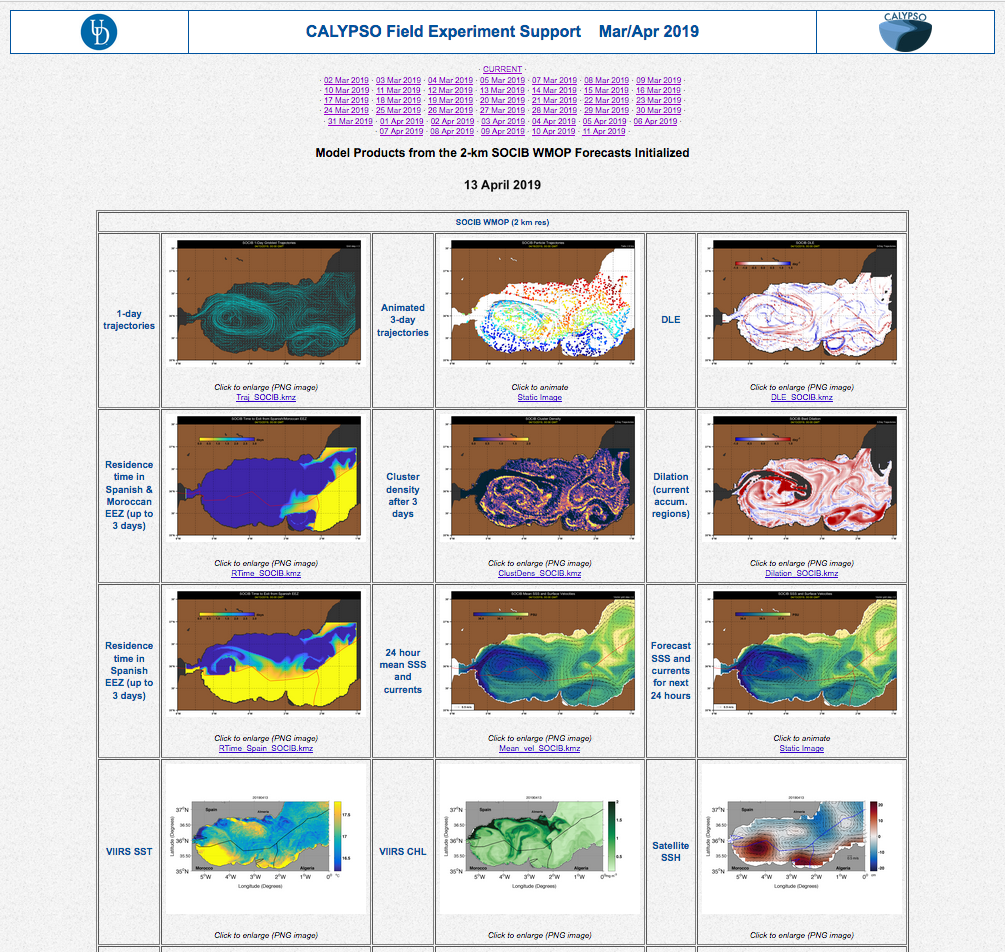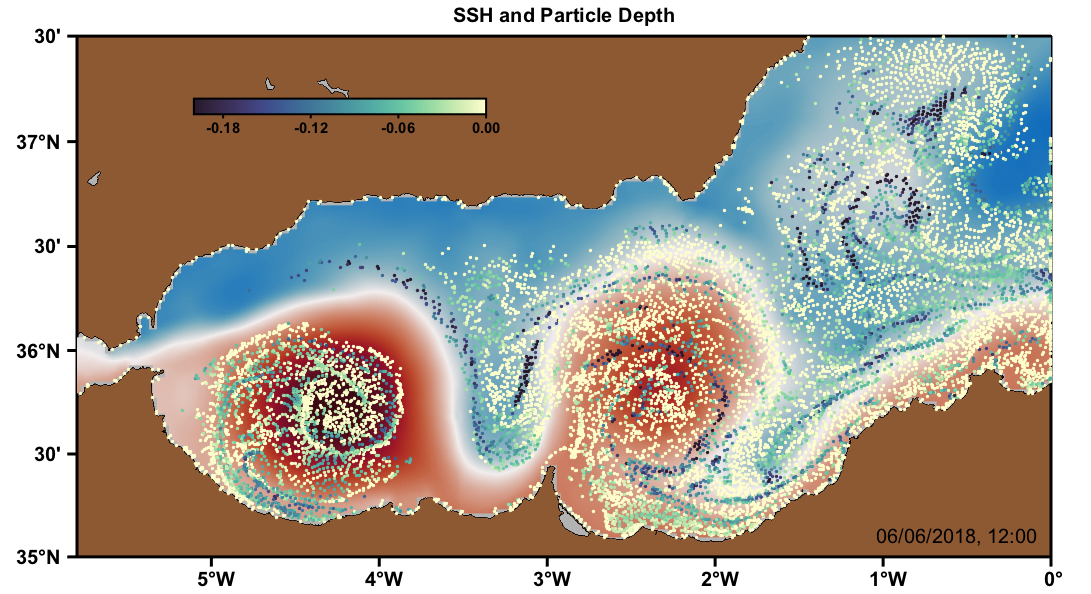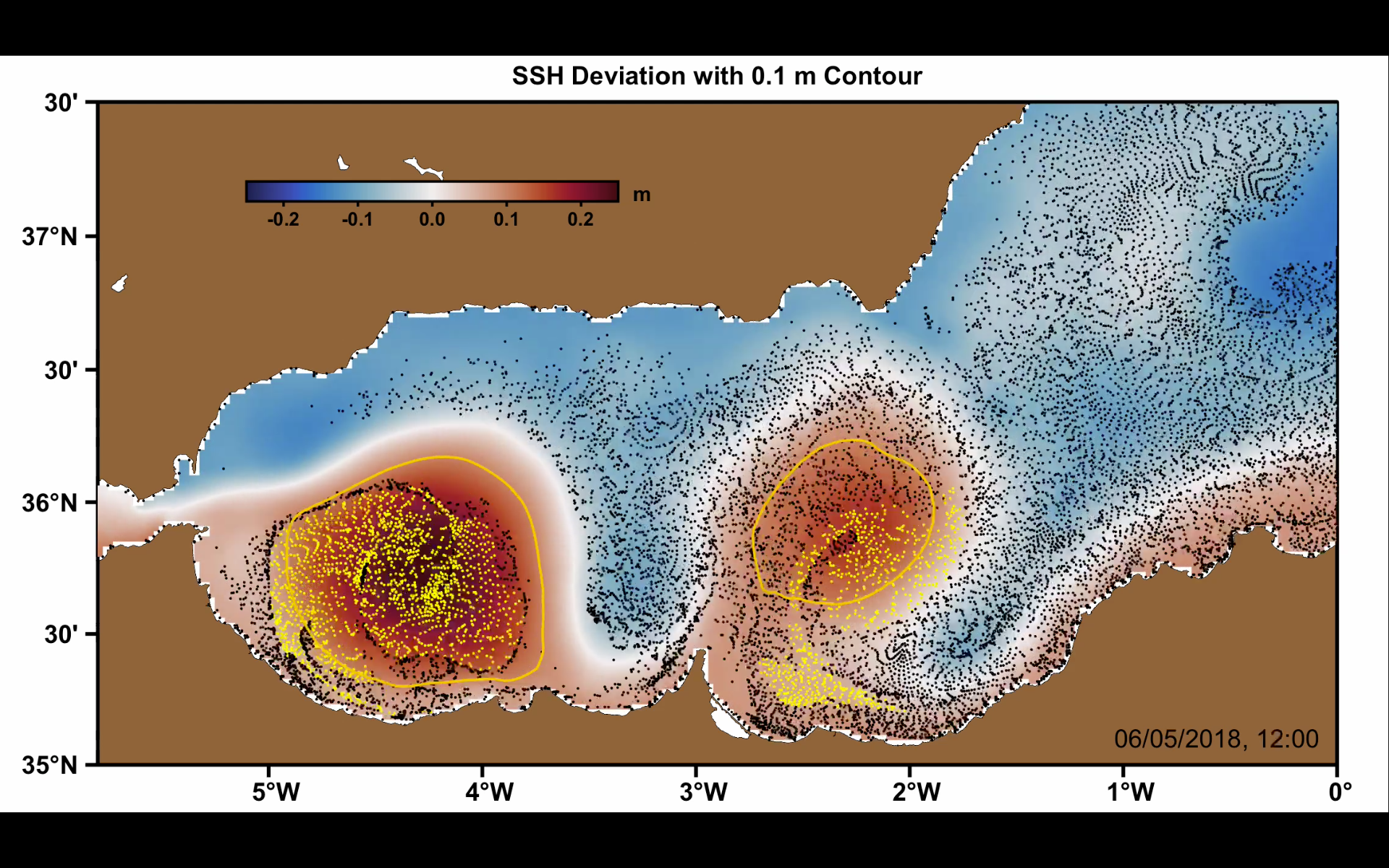

Calypso Modeling Projects
Coherent Lagrangian Pathways in 3D+1 Submesoscale Transport in CALYPSO
Helga Huntley and Denny Kirwan
UNIVERSITY OF DELAWARE
The DRI CALYPSO aims to identify the connections between mesoscale signatures, submesoscale processes, and Lagrangian pathways in order to improve understanding and predictability of the exchange of water and properties from the surface to depths below the mixed layer. In this context, we seek to address two key questions during the first three years of CALYPSO: First, how strong are vertical velocities in a submesoscale-rich environment near a salinity front, how do they impact the dominant 3D submesoscale coherent Lagrangian pathways (CLP), and what specific dynamical processes produce them? Second, how can these ephemeral transport channels be identified? Specifically, what surface signatures are tell-tale signs of vertical exchange?
We propose to undertake two tasks. The first is to characterize the vertical velocities from measurements and modeling. Vertical velocities will be measured directly during CALYPSO, but they can also be derived from horizontal divergence estimates from surface drifters. Moreover, since the drifters are expected to have different drogue depths, we will be able to assess the vertical gradients of divergence and the other kinematic properties. To compare model and observation estimates of vertical velocities and kinematic properties in the vicinity of fronts, we propose to collaborate with modelers. The model data will also permit a quantitative assessment of the role of the vertical velocity in determining CLP.
As a second task, we will construct coherent 3D+1 Lagrangian pathways from the surface through the mixed layer and identify surface signatures. This will also be performed in collaboration with modelers, whose 3D model velocity fields will be used to compute fully 3D time-varying finite-time Lyapunov exponents (FTLE) and to link surface phenomena to vertical pathways. Repeating this at multiple grid resolutions will allow us to evaluate how robust the CLP are. The contextual synoptic data in the model will also provide insight into the mechanisms by which water and associated properties are exported from the surface to depth and into the role that CLP play in this. Furthermore, we seek to stitch layer-wise analysis of drifter data together into an observed 3D time-varying picture of the CLP.
An additional two-year option would allow us to address a third basic question: How can the predictive skill of general circulation models (GCMs) for 3D coherent Lagrangian pathways be improved? The approach is to blend Lagrangian and other appropriate data with high-resolution forecast models to improve Lagrangian predictability. Surface phenomena identified as being characteristic of subduction pathways will be targeted. Initial experiments will be carried out with parallel model runs. When possible, appropriate observational data from the field campaigns will be blended with GCM forecasts.



